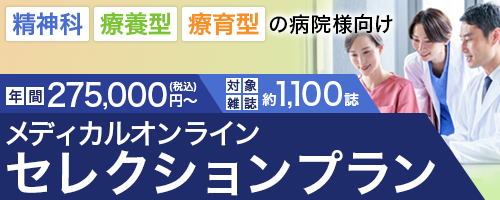アブストラクト
Japanese
| Title | 回復期リハビリテーションを行い自宅へ退院した脳内血腫を伴う重症くも膜下出血の高齢患者の一例 |
|---|---|
| Subtitle | 症例報告 |
| Authors | 田崎貴之1, 中空智子2, 道免和久3 |
| Authors (kana) | |
| Organization | 1)医療法人ひまわり会 八家病院 脳神経外科, 2)医療法人ひまわり会 八家病院 リハビリテーション科, 3)兵庫医科大学 リハビリテーション医学教室 |
| Journal | リハビリテーション科診療 |
| Volume | |
| Number | 21 |
| Page | 33-36 |
| Year/Month | 2021 / |
| Article | 報告 |
| Publisher | 日本リハビリテーション医学会近畿地方会 |
| Abstract | 「はじめに」脳卒中は, わが国において死亡原因の第4位を占め, 全介助状態になる原因としては第1位の疾患である. くも膜下出血は脳卒中全体の6.5%と比較的少ないが, くも膜下出血患者が全介助状態または死亡 (Modified Rankin Scale (以下mRS) 5-6) となる割合は32.1%と高い. また脳内血腫を伴うくも膜下出血はくも膜下出血単独の症例より予後が悪いことが知られている. 今回我々は脳内血腫を伴う重症くも膜下出血を発症した高齢患者のリハビリテーションに携わる機会を得, 在宅復帰へのサポートをした経験を報告する. 「症例」【症例】68歳, 女性 【診断】左側頭葉脳内血腫を伴うくも膜下出血, 計6カ所の脳動脈瘤, 左内頚動脈後交通動脈瘤破裂 |
| Practice | 医療技術 |
| Keywords | 重症くも膜下出血 (severe subarachnoid hemorrhage) , 脳内血腫 (intracerebral hematoma) , 回復期リハビリテーション (convalescent rehabilitation) , 高齢者 (elderly) , 在宅復帰 (discharge to home) |
English
| Title | Convalescent rehabilitation for effective management of severe subarachnoid hemorrhage concomitant with intracerebral hematoma in an elderly patient |
|---|---|
| Subtitle | |
| Authors | 田崎貴之, 中空智子, 道免和久 |
| Authors (kana) | |
| Organization | |
| Journal | Journal of Rehabilitation Practice |
| Volume | |
| Number | 21 |
| Page | 33-36 |
| Year/Month | 2021 / |
| Article | Report |
| Publisher | Kinki Regional Branch for The Japanese Association of Rehabilitation Medicine |
| Abstract | Subarachnoid hemorrhage accompanied by intracerebral hematoma is known to show poorer prognosis than subarachnoid hemorrhage alone. We report a case of an elderly patient with severe subarachnoid hemorrhage accompanied by intracerebral hematoma, who underwent successful convalescent rehabilitation and was discharged uneventfully. A 68-year-old woman developed consciousness disorder following the onset of headache. Head computed tomography angiography performed at an acute care hospital showed subarachnoid hemorrhage with a intracerebral hematoma in the left temporal lobe, as well as six cerebral aneurysms, including an internal carotid-posterior communicating artery aneurysm, which was identified as the source of hemorrhage. Postoperatively, the patient was transferred to our hospital for convalescent rehabilitation on the 88th day. At the time of admission, her Glasgow Coma Scale (GCS) was E4V1M5, with right hemispatial neglect, no speech, difficulty in auditory language comprehension, and a Functional Independence Measure (FIM) score of 18 (motor 13, cognitive 5) , and the family wished that the patient recognize them. The patient's level of consciousness improved during hospitalization, and the family requested that she be discharged home ; therefore, we added improvement of communication ability to the goals to be achieved during convalescent rehabilitation. During subsequent rehabilitation, her FIM score improved to 21 (14 motor, 7 cognitive, one point each for eating, comprehension, and expression) . The patient was discharged on the 229th day of her illness, following several discussions with the family and guidance regarding appropriate care. |
| Practice | Medical technology |
| Keywords | severe subarachnoid hemorrhage, intracerebral hematoma, convalescent rehabilitation, elderly, discharge to home |
- 全文ダウンロード: 従量制、基本料金制の方共に770円(税込) です。
参考文献
- 1) 国循脳卒中データバンク2021編集委員会: 国循脳卒中データバンク2021編集委員会: 脳卒中データバンク2021. 中山書店, 東京, 2021
- 2) Guresir E, Beck J, Vatter H, Setzer M, Gerlach R, Seifert V, Raabe A: Subarachnoid hemorrhage and intracerebral hematoma: incidence, prognostic factors, and outcome. Neurosurgery 2008; 63: 1088-1094
- 3) 宮越浩一, 井合茂夫, 波出石弘: くも膜下出血において退院時ADLに影響を与える因子の検討. 脳卒中. 2008; 30: 69-71
- 4) Hauerberg J, Eskesen V, Rosenorn J: The prognostic significance of intracerebral haematoma as shown on CT scanning after aneurysmal subarachnoid haemorrhage. Br J Neurosurg. 1994; 8: 333-339
- 5) Koyama T, Sako Y, Konta M, Domen K: Poststroke discharge destination: functional independence and sociodemographic factors in urban Japan. J Stroke Cerebrovasc Dis. 2011; 20: 202-207
残りの1件を表示する
- 6) 小菅康史, 岩川彰子, 今西剛史, 鈴木龍太: 回復期リハビリテーション病棟に入院した重症くも膜下出血例の機能予後. 日本慢性期医療協会誌 JMC. 2019; 27: 63-68



